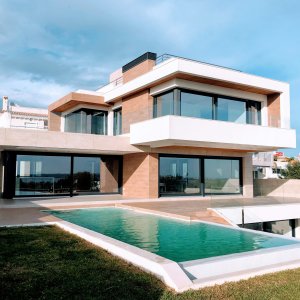Energy efficiency continues to be one of the most desired factors by new and prospective homebuyers.In 2020, NAHB surveyed more than 3,000 homebuyers, both recent and prospective,
about what features they would like to see in their homes, including environmentally friendly components and design, and that still holds true today. Some of the features buyers most
want to see in their home plans include ENERGY STAR rated windows and appliances, efficient lighting that uses less energy than traditional light bulbs, and ENERGY STAR ratings throughout the home.
Benefits of Integrating Renewable Energy in the Home
Integrating renewable energy in the home has both economic and environmental benefits. Not only do energy-efficient systems reduce a home's carbon footprint, but the cost of materials
such as solar panels can be significant. As a result, money can be saved throughout the life of the system, despite the higher upfront costs.
Steps to Implementing Renewable Energy in Residential Construction
Any new residential construction or residential retrofit requires a whole-house systems approach, which is to view the house as an energy system with interdependent parts,
each of which affects the performance of the entire system.
When planning a remodel, begin with an energy audit to understand the home's current energy use and determine how to reduce energy use and costs.
Common strategies for incorporating electrification measures include:
Resizing electrical panels to accommodate electric vehicle chargers.
Providing charging outlets in the home, creating an all-electric home, and designing homes with electrification features that can eventually lead to full electrification.
Another important step in implementing renewable energy in residential construction is green building certification. For example, certifying a project through a voluntary above-code water efficiency rating system
provides independent confirmation of installed water conservation measures and that the home was built to a higher standard than required by code.
The National Green Building Standard (NGBS) is an ANSI-approved residential building standard that showcases high-performance buildings in six areas: lot design and development, resource efficiency,
water efficiency, energy efficiency, indoor environmental quality, and building operations and maintenance. After a process overseen by a verifier and certified by the Home Innovation Research Lab,
building projects can earn one of four levels - Bronze, Silver, Gold and Emerald.





